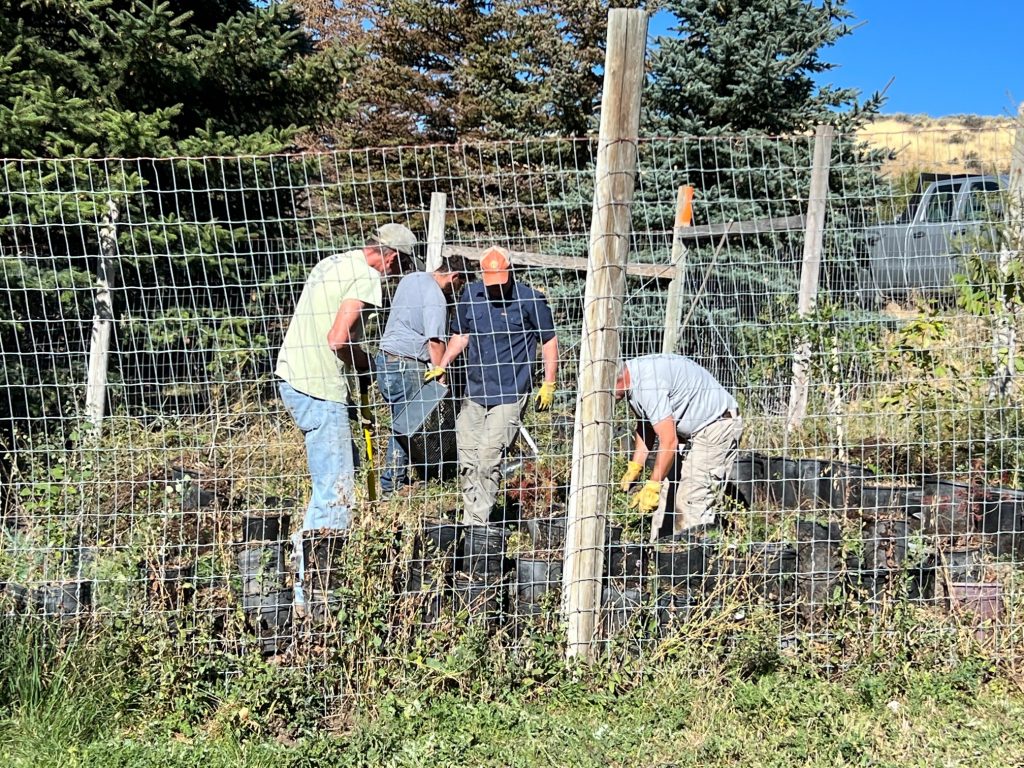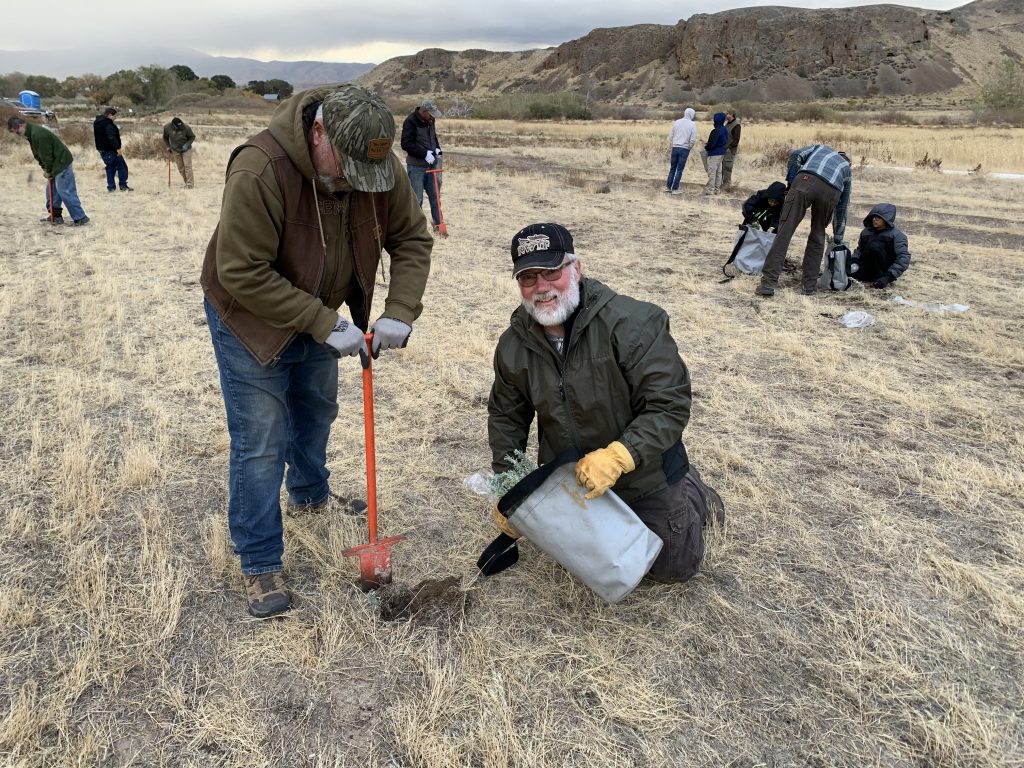The Little Tree Yard that Could
Conservation projects come in all shapes and sizes, some big, some small and some that simply take dedicated individuals to answer the call. The NWTF Idaho State Chapter knows them all.
For the last eight years, Joe Foster, NWTF Idaho State Chapter president, and a group of conservation-minded individuals in the Gem State have been continuing to nurture their local tree yard. The roughly 50-by-50-foot space, constructed by a Boy Scout troop and managed by Foster and an array of local conservationists, holds up to 500 potted shrubs and trees at a time.
“We call it ‘the little tree yard that could,’” Foster said. “All the current plants in the yard are from local cuttings, dug up or gathered seed.”

The main point of the space is to climatize the trees to the dry conditions of southeast Idaho in a controlled setting. This increases the trees’ odds of withstanding the area’s particularly arid environment once transplanted.
Since its humble beginning as a Boy Scout project, the tree yard has cycled through over 4,000 plants and has been a part of over 60 planting projects on both private and public lands.
“When you consider the benefit, the cost to accomplish this is almost nonexistent,” Foster said. “It doesn’t take a big committee, a big budget or anything like that; it just takes people who have time to leave the landscape better than it was before their efforts.”
A great example of the tree yard at work was its role in the recent 1,000 Roost Tree Project between the NWTF and the Idaho Fish and Game Department. Volunteers throughout the community planted 1,000 trees on 15 different sites, many established and climatized in the little tree yard that could.

But for Foster and the volunteers who spend their time at the tree yard, the work does not stop there. The volunteer conservationists are working to ensure other trees on the landscape are given a leg up as well.
Not too long ago, the NWTF Idaho State Chapter funded the purchase of 600 Groasis Waterboxxes. Made from bioplastics that decompose naturally, these water boxes are designed to retain water for an extended period, helping the trees survive the dry conditions.
“This technology allows trees to survive in difficult circumstances without using groundwater or electricity,” Foster said. “The boxes are initially filled with about five gallons of water, which is distributed over an extended period to the tree growing in the center, and they collect any rainwater and condensation that may become available. It’s a dedicated ‘plant guzzler,’ if you will.”
Both the thousands of trees from the little tree yard and the new technology will serve wildlife and provide ecological value for decades to come. However, the volunteer conservationists want to make delivering conservation more accessible to anyone willing to get their hands dirty.
This is evident in the new habitat trailer for which the Idaho State Chapter was recently awarded funding through the IDGF’s Community Challenge Grant.
“Our local chapter proposed to fabricate a habitat trailer to be kept at the Regional IDFG office and made available for use by IDFG staff, community conservation volunteer groups [including Mule Deer Foundation and Rocky Mountain Elk Foundation] and private landowners for use when implementing habitat projects,” Foster said.
The trailer will be a heavy-duty dual axel outfitted with a 500-gallon water tank, pumps, hoses and a water drill. This fully equipped habitat trailer will reduce preparation time and ensure needed supplies are mobile and always available.
The trailer will be used frequently for a variety of conservation projects and will address management needs identified in the IDGF’s WMA management plan. Outcomes will improve the habitat for wild turkeys, elk, deer, moose, upland game birds and many nongame species. Habitat projects will include tree and shrub plantings, grass plantings, fencing and controlled burns, among others.
From the “little tree yard that could” to a habitat trailer for anyone willing, the Idaho State Chapter continues to prove conservation can happen from humble efforts when dedicated people are involved.
“The NWTF's work across the country and on a landscape scale is critical for addressing the conservation challenges of the day,” Foster said. “The impacts of the little tree yard are an example of how individuals can make a difference locally and tie into a larger conservation narrative.”
Learn how you can get involved here.
